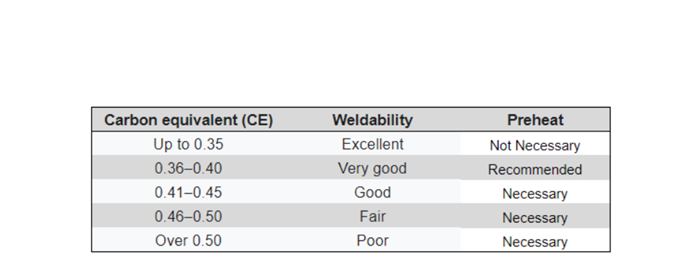The carbon content in steel is one of the most significant factors that influence the weldability of forging materials. Steel, a combination of iron and carbon, can have varying carbon content levels, which directly affect its mechanical properties, including strength, hardness, and ductility. For welded forgings, understanding the relationship between carbon content and welding performance is crucial to ensure the integrity and quality of the welded joints.
Low-carbon steels, typically containing less than 0.30% carbon, are the most weldable materials. These steels exhibit good ductility and malleability, making them ideal for a wide range of welding applications. The lower carbon content reduces the risk of cracking in the heat-affected zone (HAZ) during and after welding. This is because lower carbon levels result in lower hardenability, meaning that the material is less likely to form brittle microstructures such as martensite, which can be problematic in welded areas. Thus, forgings with low carbon content tend to have fewer issues related to cracking or distortion during welding processes.
In contrast, as carbon content increases, the weldability of steel diminishes. Medium-carbon steels, with a carbon content ranging between 0.30% and 0.60%, offer higher strength and hardness compared to low-carbon steels but come with increased risks during welding. Higher carbon content leads to greater hardenability, which increases the likelihood of forming martensitic structures in the HAZ. These microstructures are harder and more brittle, raising the chances of cracking, especially under stress or impact. Special care, such as preheating and post-weld heat treatment, is often required when welding medium-carbon steel forgings to prevent these issues.
High-carbon steels, containing more than 0.60% carbon, pose the greatest challenges for welding. The high carbon content significantly increases the steel’s hardness and brittleness, making it more prone to cracking during the welding process. In some cases, high-carbon steels may require specialized welding techniques or may not be suitable for welding at all without substantial modifications to the process. Preheating, interpass temperature control, and post-weld heat treatments are critical to avoid brittle failure in high-carbon steel forgings.
In summary, the carbon content of steel plays a pivotal role in determining the success of welding in forged components. Low-carbon steels are the most weldable, while medium- and high-carbon steels require more careful control of welding parameters to prevent defects such as cracking. Understanding the carbon content and selecting the appropriate welding procedures are essential for ensuring the durability and performance of welded forgings in various industrial applications.
Post time: Oct-16-2024




